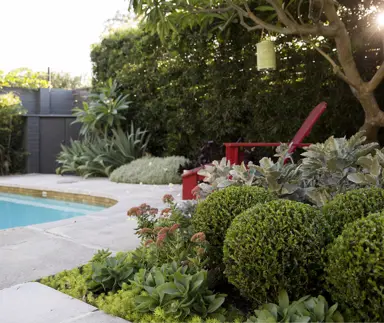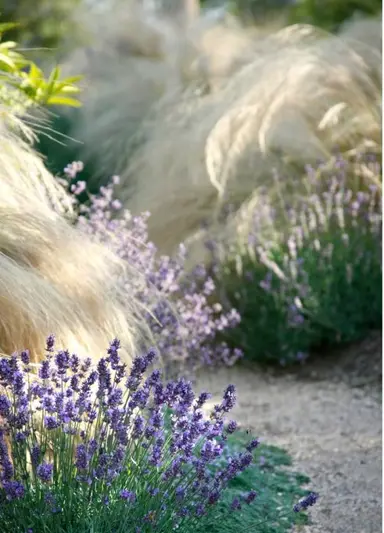Arrowhead Plant Varieties
Arrowhead Plants boast a diverse range of colours and leaf patterns, offering a unique flair to any home decor. Some popular varieties include:

The Arrowhead Plant, scientifically known as Syngonium podophyllum, is a popular houseplant cherished by plant enthusiasts across the globe. Its vibrant foliage, ease of care, and adaptability make it a delightful addition to any indoor garden, whether you're a novice or a seasoned plant parent. This comprehensive guide will delve into everything you need to know about nurturing your Arrowhead Plant, from understanding its varieties and choosing the right soil to mastering watering techniques and addressing common problems.
Arrowhead plants (Syngonium varieties) are popular indoor plants in New Zealand for their attractive foliage and easy care. With arrow-shaped leaves that change form as they mature, they bring colour and texture to homes and offices. Thriving in indirect light, they make versatile, low-maintenance choices for plant lovers.

Arrowhead Plants boast a diverse range of colours and leaf patterns, offering a unique flair to any home decor. Some popular varieties include:
⦁ Syngonium 'White Butterfly': Known for its creamy white leaves edged in green, this variety exudes elegance and lightens up any space with its subtle beauty. Its delicate appearance belies its hardy nature, making it a favourite among collectors.
⦁ Syngonium 'Pixie': A compact, easy-care indoor plant with bright green, arrow-shaped leaves accented by creamy veins. Perfect for small spaces, it thrives in indirect light and adds vibrant charm.
⦁ Syngonium 'Neon': With bright pink leaves that stand out in any collection, this variety is perfect for those who love bold, vibrant colours. Its striking foliage can be a centrepiece in any room, drawing attention and admiration.
Understanding the specific needs of each variety is essential, as slight differences in care can enhance their growth and colour vibrancy. The Plant Company provides detailed information with each of our Arrowhead plants so you can tailor your care routine accordingly.
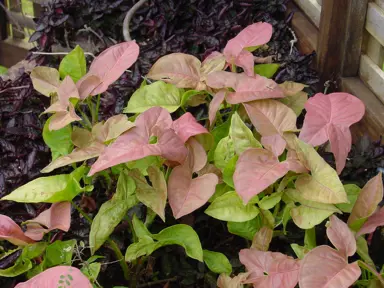
Arrowhead Plants are easy to propagate, making them an excellent choice for beginners looking to expand their plant collection. The most common method is through stem cuttings, which is a simple process.
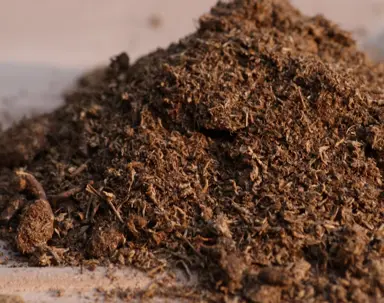
Selecting the ideal soil is crucial for the health and vitality of your Arrowhead Plant. These plants thrive in a well-draining potting mix that retains some moisture without becoming waterlogged. A balanced blend of peat moss, perlite, and potting mix provides the perfect environment for root development and nutrient absorption.
Please make sure that your chosen pot has drainage holes to prevent root rot, which can occur if the soil remains too wet. Regularly check the soil condition by inserting your finger about an inch deep; it should feel slightly moist but not soggy. You can adjust your watering schedule based on these checks to maintain the proper moisture balance.
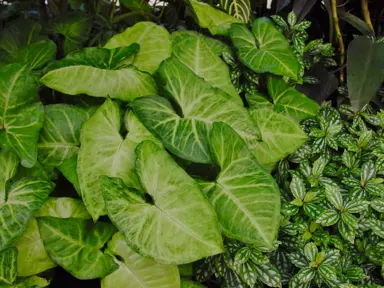
Feed your Arrowhead Plant with indoor plant fertiliser every six months. You can also use a liquid fertiliser every 4-6 weeks during the growing season to enhance its growth and vibrancy. This nutrient regime boost supports the plant’s active development, leading to more robust and colourful foliage. Be cautious not to over-fertilise, as this can lead to fertiliser burn, causing leaf damage and affecting overall health. In the fall and winter, when the plant's growth naturally slows, reduce fertilisation to prevent nutrient build-up in the soil.
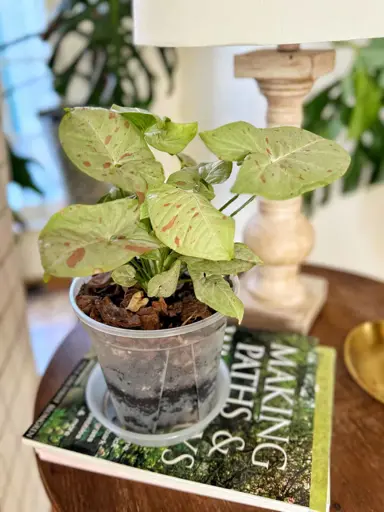
Arrowhead Plants flourish in bright, indirect light, mimicking their natural habitat under the forest canopy. Direct sunlight can scorch their delicate leaves, causing them to brown and wither. On the other hand, too little light can slow their growth, leading to sparse and leggy plants. To achieve the perfect lighting conditions, consider placing your plant near an east or north-facing window, where it can soak up the morning light without being exposed to harsh midday sun. If natural light is insufficient, use a sheer curtain to diffuse the sunlight or invest in a grow light to supplement its needs.
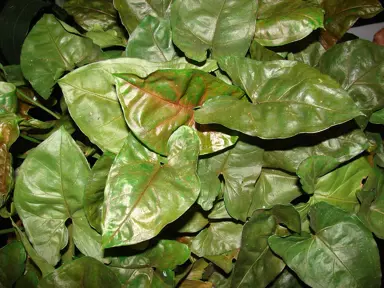
Regular pruning is essential for maintaining the shape and size of your Arrowhead Plant. By trimming back leggy or overgrown stems, you encourage bushier growth, promoting a fuller and more aesthetic appearance. Use clean, sharp scissors or pruning shears to make precise cuts just above a leaf node, ensuring healthy regrowth. Pruning also helps remove any damaged or yellowing leaves, keeping your plant vibrant and free from disease.
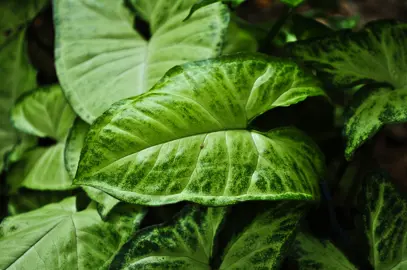
Arrowhead Plants thrive in warm temperatures ranging from 15°C to 24°C. They are native to tropical regions and thus enjoy higher humidity levels. You can achieve this by misting the leaves regularly or placing a humidifier nearby to maintain a consistent humidity level. If the air in your home is particularly dry, especially during the winter months, consider grouping your plants to create a more humid microenvironment. This natural increase in humidity benefits all your plants, promoting lush and healthy growth.

Watering is a critical aspect of Arrowhead Plant care, requiring a delicate balance to keep the plant healthy. These plants prefer consistently moist soil but are intolerant of waterlogged conditions, which can lead to root rot. Allow the top inch of soil to dry out between waterings to prevent overwatering. During the growing season (spring and summer), your Arrowhead Plant will require more frequent watering to support its active growth. As temperatures drop in the fall and winter, reduce the watering frequency, allowing the plant to enter a period of rest. Always use room temperature water to avoid shocking the roots.
⦁ Yellowing leaves, often the first sign that the plant is receiving too much water. ⦁ Wilting despite moist soil, indicating that the roots are unable to absorb water due to rot. ⦁ Root rot, which can be identified by a foul smell and mushy roots.
⦁ Browning leaf edges, resulting from dehydration and insufficient moisture. ⦁ Drooping leaves, indicating that the plant is struggling to maintain its structure due to lack of water.
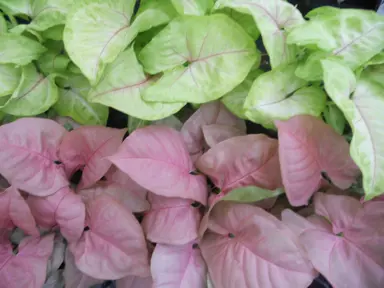
While Arrowhead Plants are generally low-maintenance, they can encounter some issues that require attention and care.
Leaf Browning
Browning edges are often a result of low humidity or underwatering. To address this, increase humidity levels by misting or using a humidifier, and ensure a consistent watering schedule to keep the plant hydrated.
Pests
Spider mites and aphids occasionally infest Arrowhead Plants, especially in dry environments. Treat these pests with insecticidal soap or neem oil, and ensure the plant is not overcrowded to improve air circulation and reduce pest attraction.
Yellowing Leaves
Yellowing can be a sign of overwatering, underwatering, or nutrient deficiencies. Adjust your watering schedule accordingly and consider fertilising if needed to restore the plant's health and colour.

It's crucial to note that Arrowhead Plants are toxic to pets and humans if ingested. The sap contains calcium oxalate crystals, which can cause irritation and swelling in the mouth and throat. Keep your plant out of reach of curious pets and children to prevent accidental ingestion, and always wash your hands after handling the plant.
Whether you need assistance finding the plant you’re looking for or you simply want to know more about who we are and what we do, we invite you to get in touch with us today. A member of The Plant Company team will get back in touch as soon as possible.

